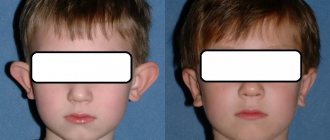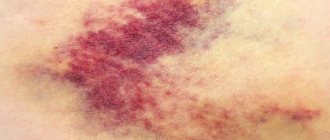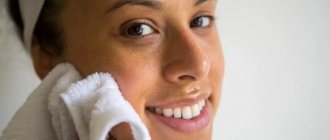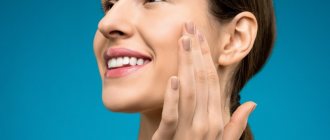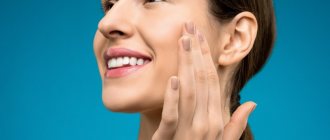Many beauties are constantly looking for new products and various methods to make their skin glow, healthy and fresh. Especially people with problem skin strive to cure acne forever.
And in the struggle for clear skin, most resort to facial cleansing from a cosmetologist. Although such a procedure cannot be called pleasant, because it is accompanied by pain, it is still worth it, because it gives the face an indescribable feeling of “breathing skin” and lightness.
However, it is important to understand that such manipulations injure the epidermis, which means it is a great stress for the skin . Therefore, after cleansing your face, skin care should be special, even more intense, thorough, gentle and careful.
In this article we will look in detail at all the most important points.
Types of cleanings
Fortunately, there are quite enough of them to choose the one that suits your specific skin type.
So, the options:
- Mechanical facial cleansing.
- Manual or manual cleaning.
- Brossage.
- Vacuum.
- Using chemical peeling.
- Ultrasonic cleaning method.
It would be correct to familiarize yourself with all the nuances of each procedure in advance.
For example, not everyone knows that not all girls are allowed to brossage . It is absolutely contraindicated for women with very sensitive and delicate skin.
Causes of peeling
Exfoliation (this is another name for deep cleansing of the skin) is impossible without exfoliating dead epidermal cells. But sometimes the peeling occurs too intensely. Causes of peeling:
- Intensity of cleansing.
Peeling can be deep, medium or superficial. In the first two cases, the epidermis is especially severely injured. Therefore, the consequences are also more noticeable: redness, peeling, swelling. - Composition of the peeling product
. Lactic and malic acids are considered gentle. They do not cause intense peeling. And the use of trichloroacetic acid is more traumatic. - Individual characteristics.
Patients with drier, more sensitive skin suffer from severe flaking after a peeling session.
For whom facial cleansing is contraindicated?
You will hear so many reviews about this procedure! Some girls categorically cannot withstand such an effect on their face (often these are representatives of dry, sensitive, or inflammation-prone skin). However, the good news is that most often they do not need facial cleansing.
But for those with oily, problematic skin types, such a procedure is simply necessary.
It is important to consider that there are reasonable contraindications for facial cleansing :
- acne with numerous inflammations (there is a high probability of infection spreading),
- moles that can be easily caught and damaged,
- capillaries that are located very close to the surface of the skin.
If such signs are not observed , then skin cleansing together with active peeling remains the best method of skin cleansing to this day.
Often, lovers of this procedure resort to it a few days before important events where they want to feel confident.
During this time, they manage to cleanse their skin almost to perfection, giving it a new breath of freedom from harmful subcutaneous contaminants and the opportunity to recover from inevitable injury.
How to relieve irritation
Irritated skin should not be constantly exposed to negative factors. She needs soothing care and protection. It is also important that the agents used have an anti-inflammatory effect. Since itching can be very unpleasant when the skin is irritated, it is recommended to use soothing products. Natural salts with plant flowers (calendula, chamomile) are effective. Herbs help restore and heal the skin. Salts saturate with minerals (magnesium, sodium, potassium, calcium, phosphorus) and increase the protective properties of the epidermis. Itching is eliminated, which reduces the likelihood of skin damage, for example, at night through unconscious scratching.
Cosmetologists advise using tea rose oil when acne or irritation appears, because it has an antiseptic effect. But it can also dry out the skin, so long-term use of this product is not recommended. Combined with natural Himalayan and Epsom salts, as well as lavender flowers, tea rose relieves irritation without negative effects on the skin.
All skin needs a combination of oil and moisture. The appropriate ratio varies depending on skin type. Itchy skin and a feeling of tension usually lack moisture. Oil emulsion-based care products are ideal:
- Slim Citrus. Accelerates metabolism, activating the lymphatic drainage effect. Normalizes the skin's water balance, cleansing it of toxins and impurities, improving its appearance.
- Muscle Care. Relieves stress and relaxes muscles, minimizing negative factors that worsen skin condition. Provides nutrients and restores the protective barrier, preventing acne and irritation.
- Balance & Calm. Smoothes and tightens the skin. Effectively eliminating peeling and eliminating dehydration. Quickly relieves irritation, fights peeling and acne.
You should also pay attention to the “Perfect Skin” set, which contains Dead Sea salt, Coffee Cocktail scrub and salt with essential oils. Comprehensive care promotes restoration - the skin becomes smooth, even and radiant. After 1-2 weeks of regular use of the products included in the set, you can forever forget about irritated skin prone to peeling. The tools included in the set complement each other. The complex effect will definitely be appreciated: relieving fatigue, relaxing and improving skin condition.
You can treat dry skin at home, for example, with magnesium oil, which will soften by delivering nutrients to the deep layers of the dermis. If the epidermis is excessively dry, a burning sensation is possible. You just need to rub a few drops into the affected areas of the skin. Magnesium oil has a pleasant consistency, is quickly absorbed and forms a transparent protective film that retains moisture in the layers of the skin and at the same time allows it to breathe. Thus, irritated and damaged areas of the epidermis are restored.
Undesirable effects of facial cleansing
Mechanical cleaning is accompanied by some unpleasant consequences, such as:
- Acne . If they still appear after cleansing your face, it means that one of the microwounds has become inflamed.
- Redness . Many girls wonder how many days redness goes away after cleansing their face. But there is no need to worry, this phenomenon is quite normal only for a few hours. If during this time the redness disappears, this will indicate that the procedure was performed by a qualified and experienced doctor. How to remove redness?
- Spots . If red spots remain several hours after the procedure, be sure to moisturize your face with any natural gel. It is important to make sure that your microvessels are not damaged. If new red veins appear, massage the area of skin as quickly as possible.
- Minor inflammations, wounds on the face . At home, spot-apply iodine, apply a mask of kaolin diluted with mineral water. Before going outside, treat any inflammation with an anti-inflammatory lotion for oily skin and apply salicylic ointment.
- Peeling . If your face is flaking, the recipe is simple - moisturize it with miracle aloe vera gel.
If the redness does not go away, you need to take action - apply anti-inflammatory aloe vera gel to your face.
Allergy to cosmetics
Allergies to cosmetics are common. In most cases, allergic reactions occur on the mucous membranes of the eyes, eyelids, skin of the face and shoulders. There are several causes of cosmetic allergies. At the same time, the body’s reaction to the use of cosmetics can be expressed in completely different ways. The most common intolerance to certain ingredients in makeup, creams, masks and lotions.
Allergy to facial cosmetics
No one is immune from allergic reactions to cosmetics. This may occur only once with a new therapy or as an ongoing occurrence.
The average number of beauty products a person uses per day is increasing. The number of allergic reactions to them logically increases. People at risk include people with allergies and people with dry, thin and allergic skin.
Cosmetic allergies can develop on any part of the body, but local reactions to cosmetics are more common. Usually this is the skin of the face. After all, she tries every day, especially for those women who often wear makeup:
- blush;
- ink;
- Contour pencil
- Eyeliner and lip liner;
- Eye shadow;
- Pomade.
Consumers generally reject cosmetic recommendations.
For example, a jar of cream or a tube of ink bears the name in the form of a round box with a half-open lid. This box always contains a number (usually 6m or 12m) that indicates the maximum shelf life of the product when the package is opened. The shelf life can be several years, but after opening such cosmetics can only be used for 6 or 12 months. Failure to comply with deadlines often causes skin irritation.
The body's negative reaction to cosmetics varies from person to person. This happens to some people even when used correctly. However, allergies do not always occur immediately. Using mascara or cream incorrectly can take hours or days. In this case, it is difficult to immediately understand what happened to the reaction.
Main allergy symptoms:
- Redness of the skin (may be accompanied by itching);
- Tingling or burning (both symptoms may occur at the same time).
- Swelling (usually in the eye area);
- Tears, conjunctivitis (the white eyes become covered with a dense network of red blood vessels and purulent discharge occurs).
Allergic manifestations are divided into two types - simple and allergic dermatitis. The simpler form is more common.
Simple dermatitis is more common. Its symptoms:
- Increased skin sensitivity with minor burns;
- The affected area may include slight swelling, dry and flaky skin, a small red rash, and blisters.
The listed manifestations can be displayed separately, simultaneously or alternately.
Allergic dermatitis does not depend on shelf life, but is the result of a special reaction of the body to certain ingredients. The symptoms are similar to simple dermatitis, but with allergic rhinitis, watery eyes and dark circles under the eyes. And performance doesn't stop at the part where cosmetics are used: pimples, rashes and swelling are visible all over the body.
Some substances most often cause allergies:
preservative
Preservatives are aggressive allergens. They are used to extend shelf life. In most cases, manufacturers choose salicylic acid or benzoic acid.
paint
Without them there can be no cosmetics. The brighter the color of lipstick, eye shadow or blush, the stronger the allergen. People with dry, sensitive and allergic skin should choose cosmetics based on natural ingredients. In this case, the tone of lipstick, eye shadow or blush should be neutral. The lighter the color of the product, the less risk of staining and irritation 1 .
Whitening agent
Lightening and whitening elements can be found in special creams and lotions for the face. Cosmetics manufacturers use hydrogen peroxide and hydroquinone as whitening agents. Due to increased toxicity, the use of hydrogen peroxide and hydroquinone has been banned in some parts of the world. When choosing a whitening cream, pay special attention to the composition of the product.
Perfume
The smell gives the product a pleasant aroma. They are natural and artificial. The first one is usually hypoallergenic, but there are also substances that can cause allergies.
Artificial components are more aggressive. Professionals recommend taking your choice of cosmetics seriously. The likelihood that a perfume is a synthetic product increases as the cost of the product decreases.
Supplements
Food additives added to cosmetics can cause allergies, even if they are natural. The principle of producing food additives is to concentrate substances in plants, seeds and fruits. Housing and animal source. Anti-wrinkle creams made from cosmetic industry additives to activate the natural regeneration process of the subcutaneous layer. This is not a bad thing, but be aware that hyaluronic acid and collagen can be very irritating for people with allergies.
What not to do after cleansing your face
Girls often worry whether they can wear makeup after this procedure ? Well, the answer is simple - you can’t.
The most you can afford is to use mineral powder and forget about using other foundations for a week. If you ignore this rule, you will not achieve the desired result.
Let's list the most important rules for caring for wounded, thin facial skin after cleansing :
- Refrain from being in the air for 2-3 days (this will protect the face from the merciless influence of strong winds, low temperatures in winter, and from ultraviolet radiation in summer),
- for a week, limit procedures that involve water, such as baths, saunas, swimming in the pool,
- Washing with hot water is strictly prohibited,
- you can't drink alcohol,
- You can’t use a scrub for a week,
- It is forbidden to touch the face,
- Naturally based moisturizing creams should not be neglected,
- It is not recommended to use water for washing that contains bleach. This chemical will not only dry out your skin, but also cause inflammation,
- It is strictly forbidden to use soap for washing! Due to the lye content, it will tighten and mercilessly dry out the skin of the face. As a result, it may become covered with small wounds or even cracks.
Possible complications
After cleaning, especially if performed mechanically with the opening of inflammatory elements, there is a high risk of complications. The most common consequence of such manipulation is worsening inflammation and the appearance of new elements with pus.
In the most severe situations, the process may be accompanied not only by a worsening of the external picture in the form of acne, but also by an increase in temperature. Antibiotics are used as treatment.
If purulent elements are carelessly opened or antiseptic rules are violated during exposure or recovery, post-acne may form. Acne marks remain in the form of scars and dark spots
You can get rid of defects by performing peelings, physiotherapy, and mesotherapy. Treatment is carried out after complete recovery from the cleansing procedure.
If you violate the rules of skin care during the rehabilitation period, or subsequently ignore the need to close the pores after sanitation, the ducts can quickly become clogged, causing the appearance of blackheads. The problem also arises due to improperly organized skin care and exposure to unfavorable factors. New points will have to be removed by cleaning again.
Care after cleaning is an important stage of the sanitizing procedure. Proper organization of the process and strict adherence to requirements will help eliminate complications and obtain quick and high-quality results.
Possible complications after cleaning:
- The appearance of red spots, bruises or bruises is a consequence of excessive intensity of the procedure or too thin skin.
- Rashes should not be squeezed out so as not to provoke the spread of infection. Acne should be wiped with chlorhexidine or Baneocin.
- Inflamed acne appears due to the removal of ulcers during cleansing or improper rehabilitation care. To eliminate them, it is necessary to use antibacterial ointments.
- Peeling occurs due to the removal of the stratum corneum of the dermis. To get rid of it as quickly as possible, you need to use delicate moisturizers.
- Swelling often appears after acne removal and can last from 2 to 7 days.
In the case of exfoliation of skin with the presence of ulcers, there is a risk of infection spreading, which leads to aggravation of the inflammatory process. The appearance of new ulcers may be accompanied by an increase in body temperature - in this case, it is necessary to undergo an examination by a doctor and take a course of antibiotics.
Self-removal of inflamed rashes can cause post-acne, scars and dark spots. After complete restoration of the dermis, you can get rid of such side effects using mesotherapy or physiotherapy.
Failure to follow the rules for caring for cleansed epidermis can cause clogged pores and the appearance of blackheads. Repeated exfoliation will help solve this problem.
Masks after cleansing your face at home
After such a deep cleansing of the face, many clients are interested in how to soothe the skin, or how to close the pores ? Experienced cosmetologists recommend, and even consider it necessary, the regular use of special masks.
However, in order for them to be most effective, it is important not to conduct unjustified experiments on the skin and adhere to simple rules.
Rules for using masks
- it is important not to try all the praised products in a row, but to make only those masks that contain medicines and antiseptics,
- apply a mask recommended by your cosmetologist for several days after cleansing,
- any new mask must first be tested on the face and applied to the skin in a thin layer,
- if the consequences of facial cleansing are normal, then masks made from vegetables or fruits are great,
- do not overdo it with masks: they should be used once every 2-3 days .
Proper care after the procedure
The success of facial cleansing largely depends on how a woman follows skin care recommendations. Often cosmetologists supplement Metrogyl cleansing with gel and this gives a good effect. However, the use of antibiotics is not always justified or appropriate. Then cosmetologists advise the following actions:
- Wash your face with melt water or mineral water. You can also add lemon juice and apple cider vinegar to the solution. In this way, the surface of the epidermis is acidified and many problems with inflammation are solved.
- During the rehabilitation period, pamper your skin with fortified cocktail compositions for facial skin.
During the process of cleansing the face and in the subsequent rehabilitation period, compliance with these rules will minimize or avoid the formation of inflammatory elements:
- meticulously maintain cleanliness of skin, hands and tools;
- choose your favorite skin care products that suit your skin type;
- do not abuse cosmetic products with comedogenic effects;
- reduce your time in the sun;
- adjust your diet by eliminating junk food and enriching it with vegetables and fruits.
Recommendations from experts
To help your skin recover faster, you need to follow these rules:
- Stop exercising. Sweat can irritate damaged skin. Mechanical damage that is possible during physical activity is also dangerous.
- Stop going to the pool or sauna.
- Avoid dishes that contain a lot of salt and hot spices. Also forget about alcohol during this time. These foods increase sweating.
- Nicotine is also harmful to injured skin.
- It is better to attend events after recovery - it is important to protect yourself from sources of bacteria.
- You need peace and no stress. An organism that is under stress performs regenerative functions worse.
Before peeling, you should consult with your specialist about what kind of care is suitable after the procedure. After all, the skin of different patients reacts differently. But there are universal recommendations. These include careful moisturizing, the use of sunscreens, and the use of products with vitamin B3.
But using oily cosmetic products and scrubs is not recommended. Also, do not peel off dead skin, touch your face, apply decorative cosmetics, or wash your face with tap water.
Peeling after a cosmetic procedure should not frighten the patient. It is important to follow the advice of a cosmetologist and be patient. If peeling does not go away for more than 2 weeks, it is important to contact your cosmetologist again.

